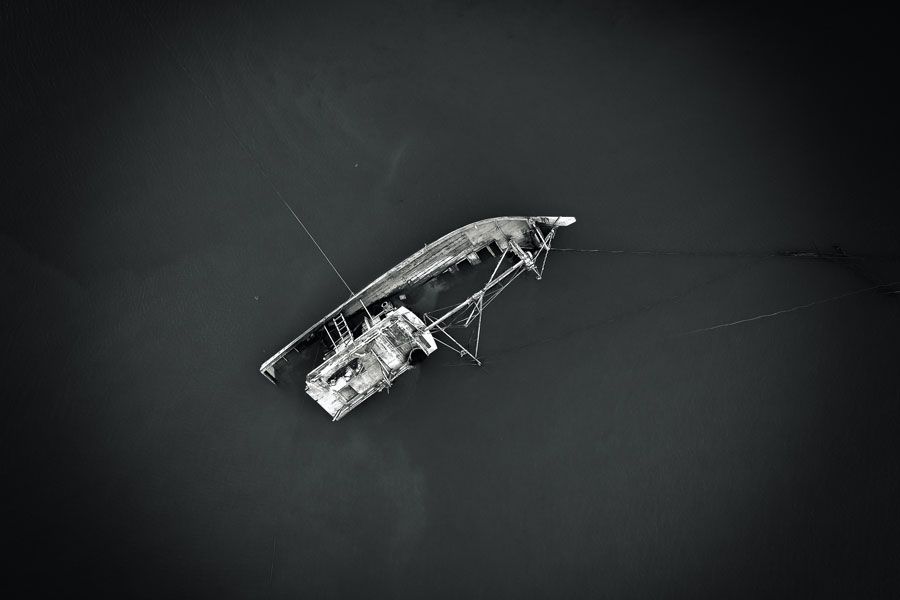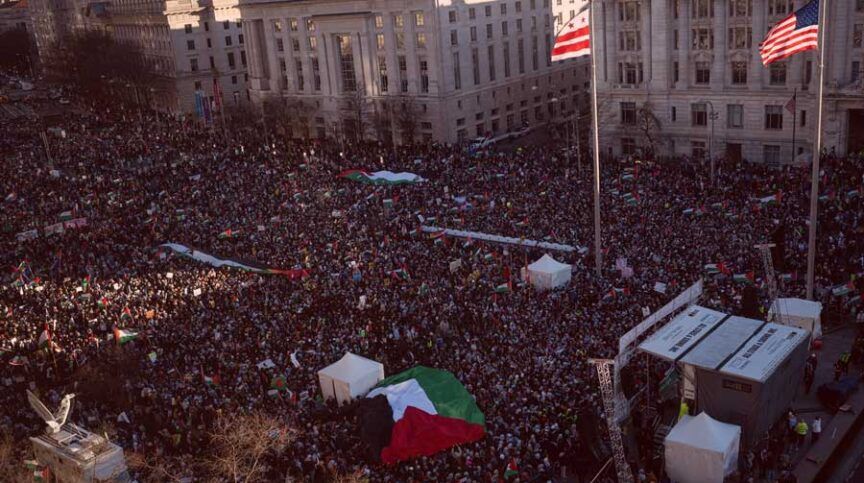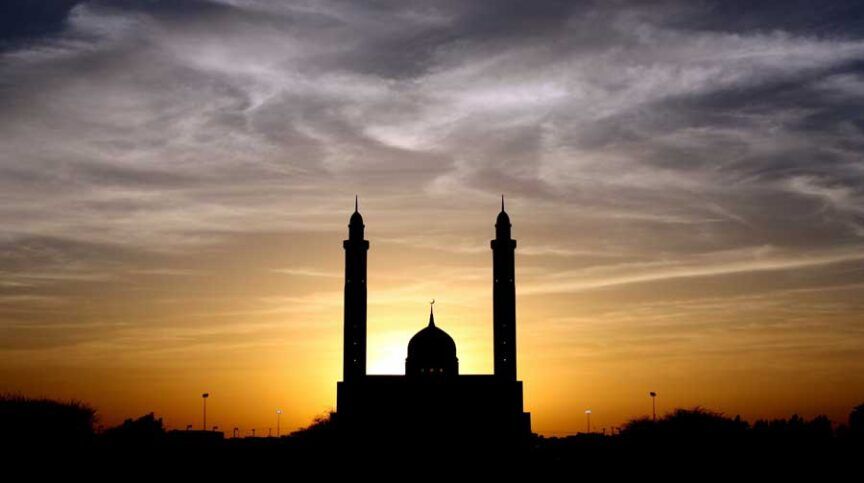The recent sinking of a boat on June 14, the Adriana, carrying 750 people en route to Europe from Libya, serves as a somber reminder of the immense human cost associated with desperate, dangerous migration which too often ends with tragedy. Only 104 individuals survived the sinking of the flagless fishing trawler. The migrants, Pakistani, Syrian, Egyptian, and Palestinian, paid between $4,500 and $6,000 to board the boat and were told by the human smugglers that they would arrive in Italy after a 3-day journey. The boat was overcrowded, and each person had only 40 cm of space (a little more than 15 inches), estimated one of the survivors. The smugglers took from the migrants all belongings including bottles of water so as to make room for more passengers. No life jackets were provided.
After five days at sea, the Adriana’s engine malfunctioned and conditions deteriorated fast. There was no water, and some people, in desperation, were drinking urine. Two merchant ships were in the area on June 13 and approached the boat to offer food and water. According to one survivor, “Fights broke out over food and water, people were screaming and shouting.” He said that “If it wasn’t for people trying to calm the situation down, the boat was on the verge of sinking several times.”
According to an article in the New York Times, “Collectively paying as much as $3.5 million to be smuggled to Italy, migrants crammed into the Adriana in what survivors recalled was a hellish class system: Pakistanis at the bottom; women and children in the middle; and Syrians, Palestinians and Egyptians at the top.”
Blame has been directed at the Greek Coast Guard for trying to attach a rope and tow the stricken boat to safety. The Coast Guard alleges that they attached the rope just to get closer to the boat in order to assess their situation. According to reports, the Coast Guard was in communication with the boat’s captain, a 22-year-old Egyptian, who told them they needed no help and would continue their journey to Italy. Giuseppe Cataldi of the University of Naples L’Orientale, notes, however, that “…once there is the perception of a dangerous situation, the duty is to intervene — notwithstanding the attitude of the people on board.” UNHCR Special Envoy for the Central Mediterranean, Vincent Cochetel, stated, “The boat was overcrowded, was unseaworthy and should have been rescued and people taken to safety, that’s quite clear.”
Heart-wrenching tragedies like this require a good-faith analysis of the complex factors contributing to such incidents. By examining the actions of human smugglers, the survival challenges faced by those seeking refuge, the geopolitical climate, and other relevant factors, we can gain a balanced understanding of this devastating event.
- Human smugglers: At the forefront of responsibility for such a tragedy are the human smugglers who operate with little regard for human life. Their actions in overloading the boat with shoulder-to-shoulder passengers and failing to provide life jackets or food and water demonstrate a callous disregard for the safety and well-being of those they exploit. These smugglers capitalize on desperation and vulnerability, exploiting individuals seeking a better life.
- Victims’ survival challenges: Desperate circumstances may have compelled them to board that boat. The decision to board an overcrowded boat that could not safely accommodate even a fraction of the passengers reflects a willingness to risk their lives in a plainly dangerous way. Most people would only do so if they were trying to escape a genuinely dangerous environment in order to survive.
- Seeking of refuge through illegal entry: The motivation to seek refuge in a country, even if it necessitates entering illegally, highlights the dire circumstances faced by individuals in their home countries. The challenges associated with legal pathways and the lengthy bureaucratic processes often drive people to resort to irregular migration. The often-desperate predicament that impels individuals to attempt illegal immigration does not negate the fact that they are attempting to enter another nation illegally. This unfortunately means that human smugglers will continue to exploit them, and similar tragedies will continue to happen.
- Geopolitical factors: The involvement of nations, even instigation by some nations, in conflicts that have destabilized the Middle East and northern Africa should be underscored. Years of warfare and political unrest have resulted in failed states, economic instability, and a breakdown of social order. These factors create an environment in which citizens feel compelled to flee in search of safety, stability, and basic human rights.
- Societal factors and global responsibility: Beyond the immediate players involved, societal factors and global responsibility also play a role. Factors such as poverty, lack of economic opportunities, social inequality, and limited legal pathways for migration contribute to the desperation felt by individuals. The international community bears a collective responsibility to address the root causes of forced migration and work toward comprehensive solutions.
Disparate Media Coverage of the Adriana and Titan Tragedies
Some have compared the spare media coverage of the sinking boat of migrants with the expansive coverage given to the submersible carrying five people to visit the sunken Titanic. The passengers on the submersible had paid $250,000 each for the experience. The submersible imploded and killed all on board. Unfortunately, the media does not report the news in a fair and balanced way.
The submersible accident involving affluent individuals who paid a substantial amount for a unique experience may have captured attention due to it being a highly unusual event, involving adventure and exploration. The tragedy was seen as unexpected and aroused curiosity and empathy. In contrast, sadly, the sinking of a migrant boat, although grossly more consequential in terms of loss of life, is not a new or singular occurrence in today’s world, leading to a certain level of desensitization and diminished newsworthiness in the eyes of the media.
The media often gravitate toward stories that are novel, rare, or sensationalist. In addition, the news industry is driven by economic considerations including advertising revenues and audience preferences. Stories with potential for higher ratings or public interest tend to receive more coverage. The submersible accident, involving a costly endeavor by individuals from privileged backgrounds, could generate higher public curiosity and engagement. Media outlets, while thoroughly conscious of the profit-driven imperatives, may also highlight stories that align with corporate interests, with official narratives, and/or with oligarchic priorities, inadvertently contributing to skewed coverage.
Violent Conflicts and Smugglers
Ethnic conflicts, civil wars, and nations which devise all manner of interventions in attempts to subjugate and exploit other sovereign countries are mainly responsible for the destabilization that then descends into political chaos and economic ruin. Out of the destruction come men, women, and children who are fleeing the violence and stark survival challenges. In the aftermath of the destruction, human smugglers exploit the vulnerable and desperate people trying to escape. After the Adriana sank, nine of the survivors were arrested, including the 22-year-old Egyptian captain, for human smuggling. The UN Office on Drugs and Crime defines human smuggling of migrants:
“The smuggling of migrants is the facilitation of crossing borders illegally or residing illegally in another country with the aim of making a financial or other material profit. This crime is often perpetrated by organized criminal networks, which seize the opportunity to make large profits from an illicit activity involving little risk of detection…Corrupt officials and other individuals may also be involved in the process.”
The sinking of the Adriana is sadly part of an international calamity. According to UN News, between 2014 and 2022, 50,000 people died while migrating to seek a better life. The number of dead migrants is from a report, the Missing Migrants Project, part of the UN’s International Organization for Migration (IOM). Julia Black, co-author of the report stated, “While thousands of deaths have been documented across migration routes each year, very little has been done to address the consequences of these tragedies, let alone prevent them.” According to the report, 60 percent of those who die en route remain unidentified. This means that families are left in limbo, with no news about the whereabouts or even the survival of their loved ones. The deadliest route is to and within Europe, accounting for at least 16,000 deaths, followed by Africa, with 9,000 migrant deaths, 7,000 in the Americas, and 6,200 deaths in Asia. It is estimated that the number of deaths is vastly undercounted.
The IOM has called for international efforts to ensure search and rescue operations whenever there are distressed migrants, whatever region they are in, emphasizing that “obligations under international law, including the right to life, must be upheld at all times.” Julia Black notes that “Regardless of the reasons that compel or drive people to move, no one deserves to die in search of a better life.”
The sinking of the Adriana is currently under an ongoing criminal investigation.






